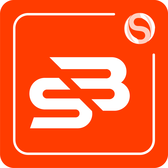Or go to our Shopify Theme Detector directly
5 Blog Titles to get More Traffic for Shopify Store [2024]
Last modified: October 4, 2023
![5 Blog Titles to get More Traffic for Shopify Store [2024]](https://shopthemedetector.com/blog/wp-content/themes/ShopBlog/assets/img/faq_placeholder.jpg)
When it comes to generating traffic for your website, there are lots of different approaches. However, blogging has been proven time and again that it has the potential to grow your website traffic with ease. Websites that publish more than 15 articles a month get more traffic, more leads, and greater profits than those that don’t publish any at all.
There is a lot of effort into making good content online. However, there are lots of problems when it comes to branded content: often it is too salesy and the customers are turned off by the content. In addition, you’ve got to make sure that you optimize your content for search engines. While an app can help you here, you might also need to adjust your blog titles.
To help you, here are 5 blog titles, with some great customizations and content, that can help you get more traffic to your Shopify store. Each one can be varied a lot to help you generate more content for your website, without you duplicating traffic.
| # | Name | Image | |
|---|---|---|---|
| 1 |

|
SEO Booster ‑ SEO Marketing
|
|
| 2 |

|
Plug In SEO
|
|
| 3 |

|
SEO Manager
|
|
| 4 |

|
Benchmark Hero
|
|
| 5 |

|
SEO Doctor
|
|
| 6 |

|
Ultra SEO
|
|
| 7 |

|
SEO Products Optimizer
|
|
| 8 |

|
Smart SEO
|
|
| 9 |

|
SEO Image Optimizer
|
|
| 10 |

|
JSON-LD for SEO
|
|
| 11 |

|
SEO Expert Pro
|
|
| 12 |

|
SEO Images All-In-One SEO
|
|
| 13 |

|
SEO Ranger
|
|
| 14 |

|
All In One SEO Optimizer
|
|
| 15 |

|
ReloadSEO
|
|
| 16 |

|
SEO Assistant by Buymaxx
|
|
| 17 |

|
SEOMetriks Marketing Tools
|
|
| 18 |

|
Shopify SEO Suite by AVADA
|
|
|
Show More
|
|||
How to [Solve a problem]
When it comes to articles that perform well online, there is nothing better than a how-to guide. Using the words how to often help you describe that your content is going to solve a problem and give readers an actionable plan that is good for them to execute.
Within the content, you can mention products, case studies or things related to your brand that give it marketing power too.
By prioritizing the creation and publication of how-to articles, you can establish your brand as an authoritative source of information and advice.[A set number] Tips to [Pick Topic]
This is very similar to the how-to guides but this is more specific to giving customers a lot of options for solving a problem. For instance, if you’re talking about trouble sleeping, the tips could be about getting back to sleep. The tips could include three or four products that you sell.
This title works because tips are something that Google sees as valuable and those titles with numbers often outperform other titles on search engines. In addition, this is an easily customizable title that can be written again and again.
Case Study: [How We Solved]
This is another typical option. This is where you tell a story about how you solved a problem that a customer had. You can include the customer’s problem, the impact it was having on them and then the solution you gave.
The final result should be a list of the outcomes that you were able to achieve. These are less likely to be read by new audiences to your brand but can be effective with returning audiences.
Compare: [Option A] vs [Option B]
This is another common topic that is really good when you have two key options that the customer can use. When you sell software, products, etc., you can use this to compare two of your products and then tell customers which they should buy for certain circumstances. Both could be recommended, but for different customers.
Why you’re not [Choose an Event]
This is an interesting option but it is something that can be potent for your audience. Audiences often search on Google and other search engines when they need to find an answer. This allows them to find a solution and you to recommend a product. But it plays on their potential search term and speaks more directly to them.
A good example of this would ‘Why you’re not Selling More on Facebook’. Customers will use the terms ‘selling more on Facebook’ in search results. You can add other elements to the title like ‘5 reasons’ to make it more search engine friendly.
Enhancing Shopify Blogging for SEO
Optimizing Blog Structure
We understand the importance of a well-structured blog that not only appeals to readers but also aligns with SEO best practices. A clean design ensures easy navigation, enhancing user experience.
Implementing intuitive navigation menus and a well-organized site structure minimizes clutter, ensuring that readers can easily find the content they are looking for. We’ve always emphasized the importance of a seamless user experience, drawing from our extensive experience in digital marketing and development.
Keyword Strategy
In our years of digital marketing, we’ve honed our skills in identifying high-ROI keywords and uncovering keyword gaps. We align our Shopify blogging with marketing goals, ensuring each post is strategically crafted to target specific keywords without compromising content quality.
We adapt and optimize content based on analytics, ensuring that our blog remains a valuable resource for our audience and continues to rank high on search engines.
Engaging Content
Balancing educational and promotional content has been a cornerstone of our content strategy. We integrate product features within informative articles, ensuring readers receive value while also learning about our offerings.
Our expertise in content marketing is reflected in our ability to create engaging content that resonates with our audience, fosters relationships, and encourages social sharing and engagement.
Monitoring and Adapting Blog Performance
Performance Metrics
Utilize tools like Google Analytics to monitor key performance indicators. We track traffic, engagement, and conversions to articulate our blog’s performance.
Our extensive experience in digital marketing enables us to spot weaknesses and strengths, allowing us to take corrective actions and optimize content according to customer behavior.
Content Adaptation
We believe in the power of data. Analytics information is pivotal for us to adjust our content and improve performance.
Underperforming content is enhanced, and high-performing topics are prioritized. Our adaptability is rooted in our years of experience, ensuring that our blog remains a valuable, informative, and engaging resource for our readers.
Customer Engagement
Our blog serves as a platform for building relationships with our current customers and attracting new ones. We feature customer testimonials, address feedback, and encourage community engagement.
Our expertise in developing engaging content is evident in our ability to balance educational material with promotional posts, ensuring our readers are always informed, engaged, and valued.
Conclusion: Five Blog Titles to Get More Traffic for Shopify Store
When it comes to getting more traffic to your Shopify store, writing a blog is a great option. You can use this blog management app to help you manage your blog, but you will need to generate the content or get a copywriter to help you.
-
How can I monitor and analyze traffic on my Shopify store?
Use Shopify Analytics for visitor insights and integrate Google Analytics for advanced tracking, reporting, and optimization.
-
How can I optimize my Shopify store for SEO?
Implement keyword optimization, improve site speed, ensure mobile responsiveness, and use SEO-friendly URLs to optimize your Shopify store for SEO.
-
What blog titles should I avoid in order to get more traffic for my Shopify store?
Avoid vague, clickbait, and overly complex or long titles to attract more traffic to your Shopify store. Focus on concise, positive, SEO-optimized, unique, and audience-targeted titles that naturally integrate keywords.

 PageFly Landing Page Builder
PageFly Landing Page Builder  Shopify
Shopify  SEMrush
SEMrush  Website Maintenance
Website Maintenance  UpPromote
UpPromote